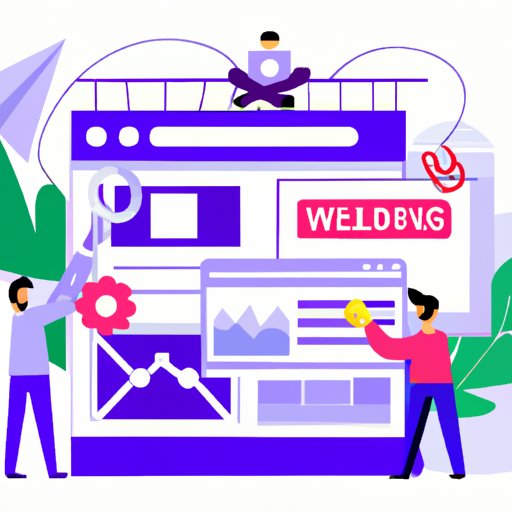
How to Build a Website: A Beginner’s Guide
Welcome to our beginner’s guide to building a website. Whether you’re creating a website for your business, personal blog, or online store, the process can be daunting. Our step-by-step guide will provide you with everything you need to know to design, launch, and promote your website successfully.
In today’s digital landscape, having a website is crucial for any business or individual who wants to establish an online presence. A website allows you to showcase your products or services, share your story, and connect with an audience around the world. But where do you begin? Let’s dive into the step-by-step process of building a website.
Step-by-Step Guide
The first step in building a website is registering a domain name and choosing a hosting provider. A domain name is your website’s address on the internet, and a hosting provider is the server that houses your website’s data. Popular domain registrars include GoDaddy, Namecheap, and Bluehost. When selecting a hosting provider, consider factors such as cost, uptime, and customer service. HostGator, SiteGround, and InMotion Hosting are popular options.
Once you’ve secured a domain name and hosting provider, it’s time to select a website builder and design your site. Popular website builders include WordPress, Wix, and Squarespace. These platforms allow you to create a website without needing to know how to code. Choose a template or theme that aligns with your brand or vision and customize it to your liking. Make sure your website has a clear and easy-to-use navigation bar and is optimized for mobile devices.
When it comes to creating content for your website, remember that quality trumps quantity. Be concise and engaging in your text, and break up paragraphs with headings and subheadings to make it easier for readers to scan. Use high-quality images and videos, and ensure all multimedia is optimized for fast load times. And don’t forget to include calls to action to encourage visitors to take the next step.
Choosing the Right Platform
There are many website platforms available, each with its own strengths and weaknesses. WordPress is the most popular website builder, offering a high degree of customization and flexibility. Wix, on the other hand, is known for its user-friendly interface and drag-and-drop functionality. Squarespace is a great option for those looking for sleek and modern design templates. Consider the needs of your website and choose a platform that aligns with your goals and expertise.
Design Tips
Your website’s design can make or break its success. When designing your website, keep in mind best practices for color schemes, typography, layout, and navigation. Use a consistent color palette that aligns with your brand and avoid busy or clashing colors. Choose legible fonts that are easy to read on all devices. Ensure your website’s layout is clean and streamlined, with visual hierarchy that guides the eye to key information. And make sure your navigation bar is straightforward and intuitive.
SEO Optimization
Search engine optimization (SEO) is the practice of improving your website’s visibility in search engine results pages. Effective SEO involves keyword research, on-page optimization, and link building. Choose keywords that align with your business or website, and ensure they are included in your website’s content and meta information. Optimize your website’s loading speed and overall performance, and ensure your website has a clear structure and internal linking. Finally, build external links to your website to improve its domain authority and credibility.
Mobile Optimization
Today, more and more internet users access websites on their mobile devices. That’s why mobile optimization is crucial for any website. Ensure your website is responsive, meaning it adapts to different screen sizes and orientations. This can be accomplished through responsive design or a separate mobile website. Additionally, optimize your website’s content and layout for mobile devices, ensuring all multimedia is optimized for fast load times.
Content Creation
Creating high-quality website content is an art form. Effective content should be informative, engaging, and tailored to your target audience. Craft attention-grabbing headlines and use storytelling to captivate your readers’ attention. Use multimedia such as images, videos, and infographics to break up text and illustrate your points. And ensure your content is optimized for SEO, using keywords and internal linking to help readers find what they’re looking for.
Launching and Promoting the Website
Once your website is ready to launch, it’s time to promote it to your target audience. Use social media marketing to share your website with followers and fans. Leverage email outreach to connect with potential customers or clients. And consider experimenting with paid advertising to reach a broader audience. Remember to track your website’s performance using analytics tools, and adjust your strategy as needed. Building a successful website is an ongoing process, and its success relies on consistent effort and optimization.
Conclusion
Building a website is an essential step towards establishing a digital presence. By following our step-by-step guide, choosing the right platform, designing an appealing website, optimizing for SEO and mobile devices, creating high-quality content, and promoting your website, you’ll be well on your way to success. Remember to evaluate your website’s performance regularly and adjust your strategy as needed.





